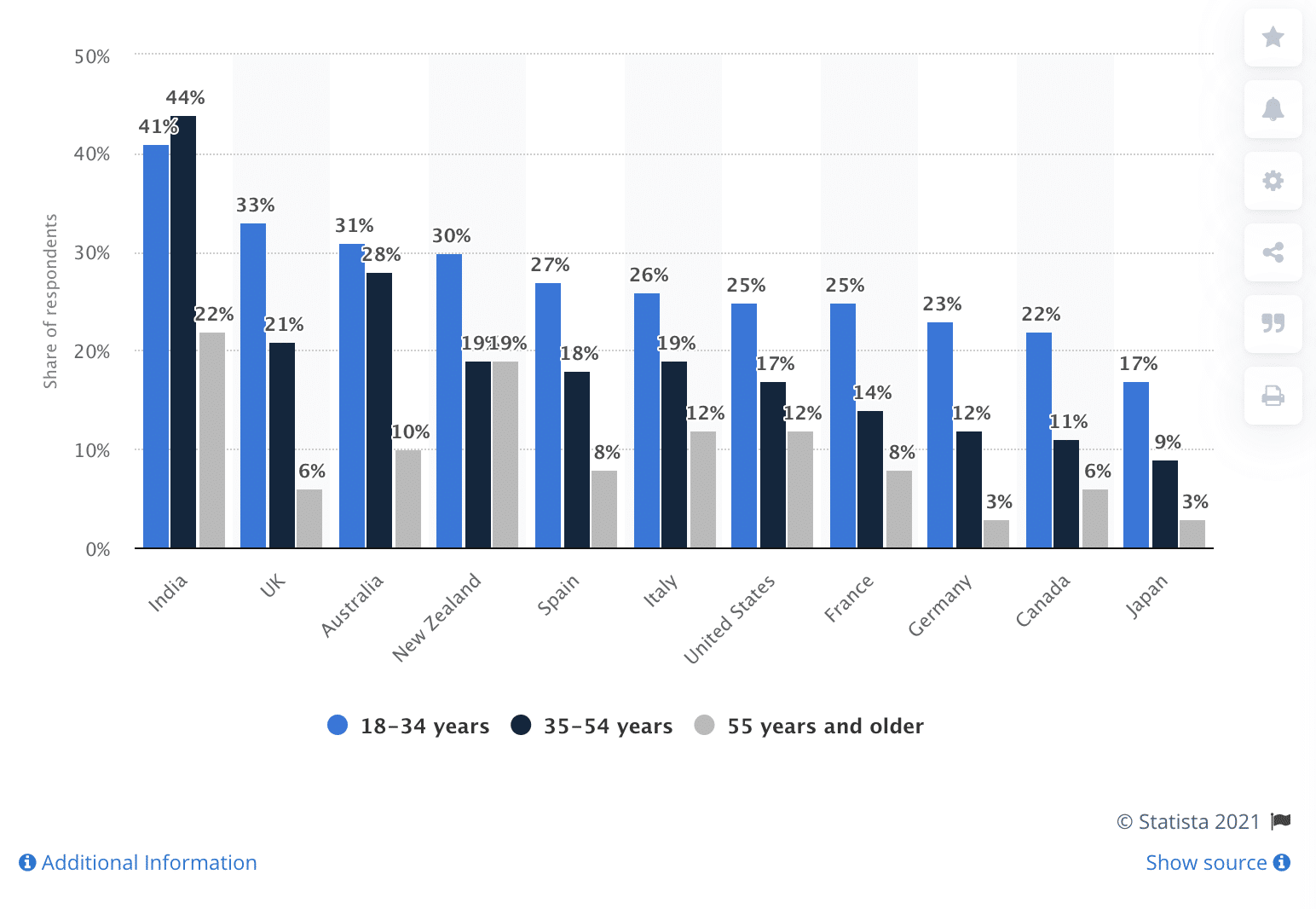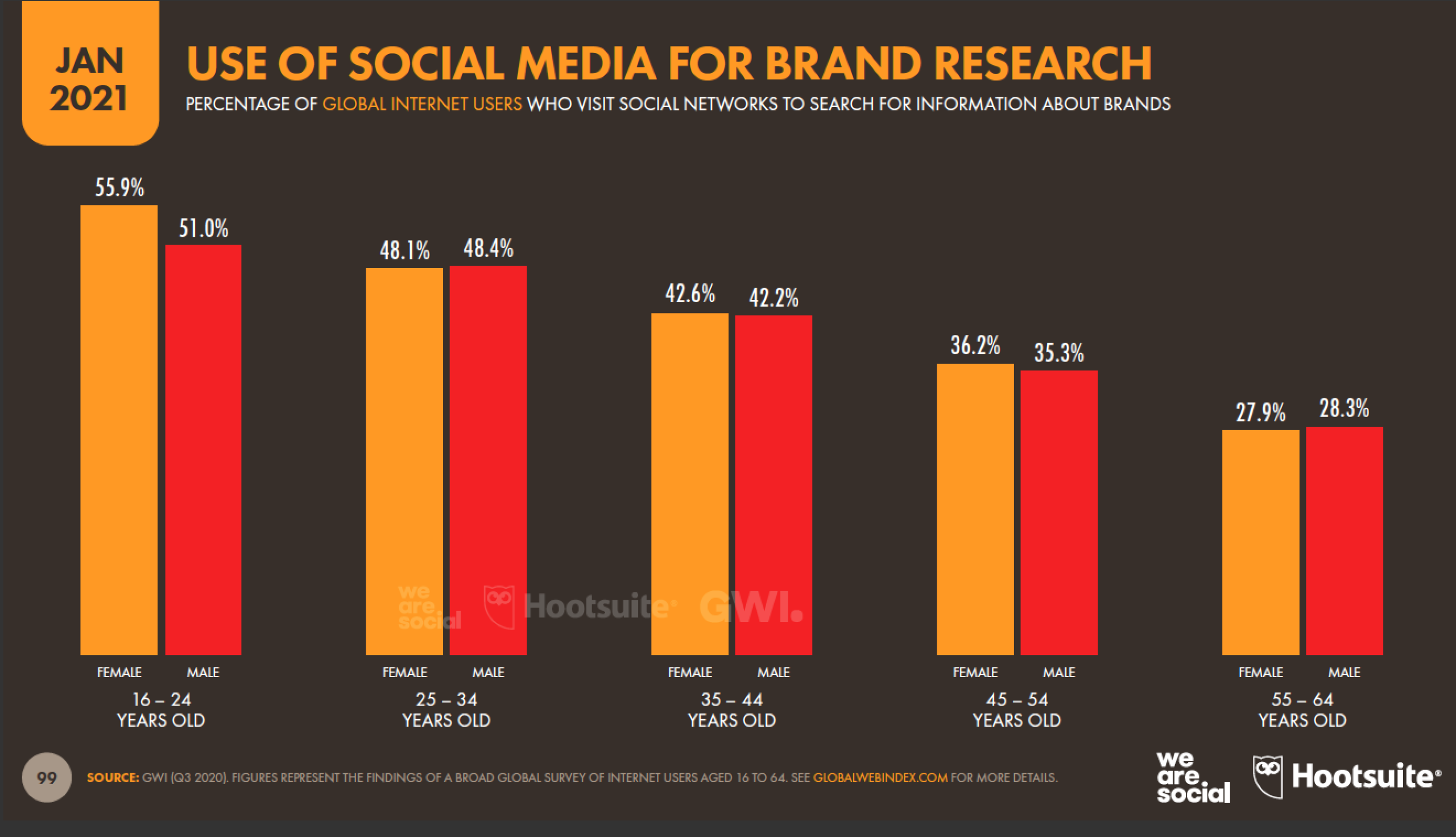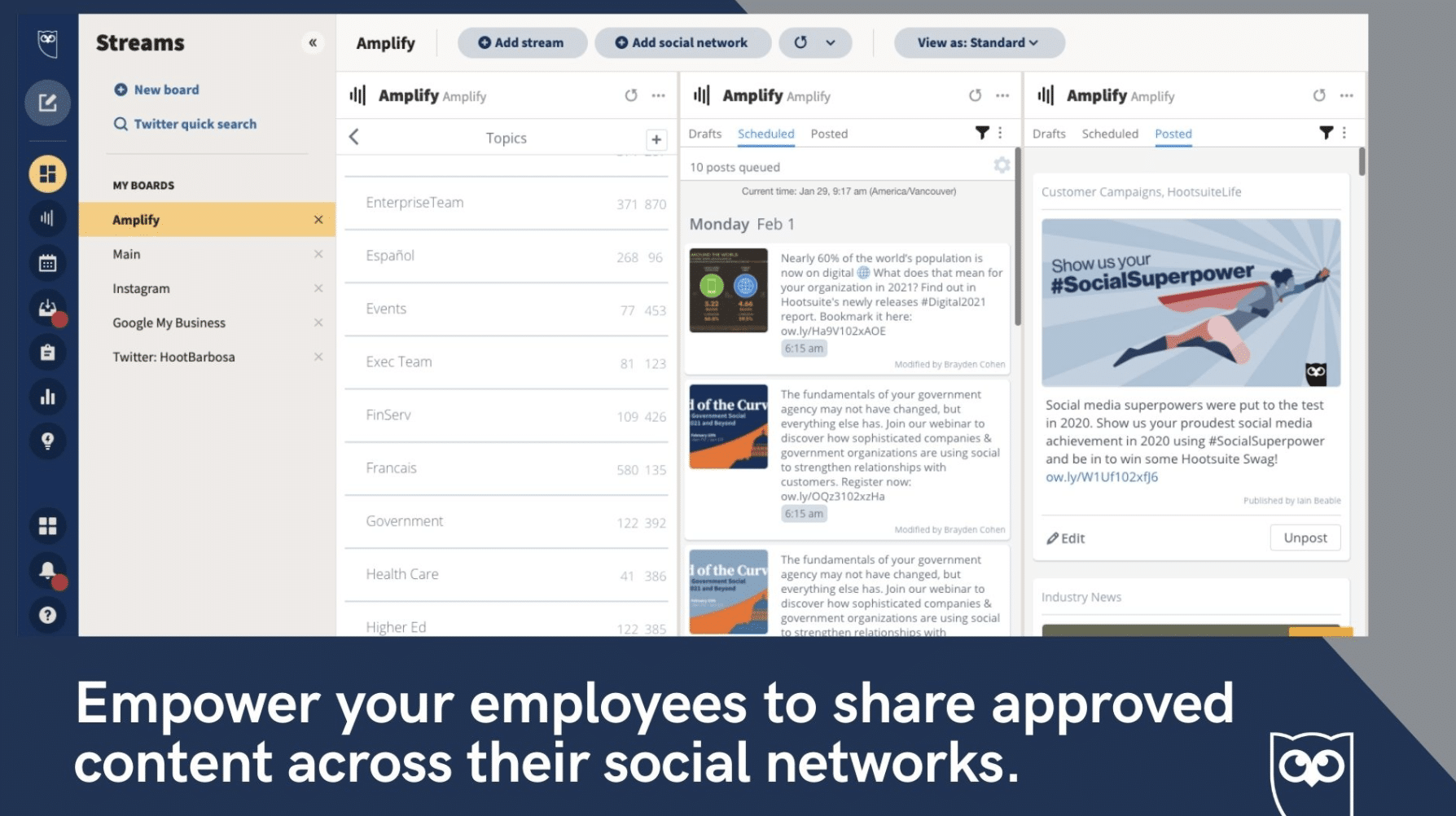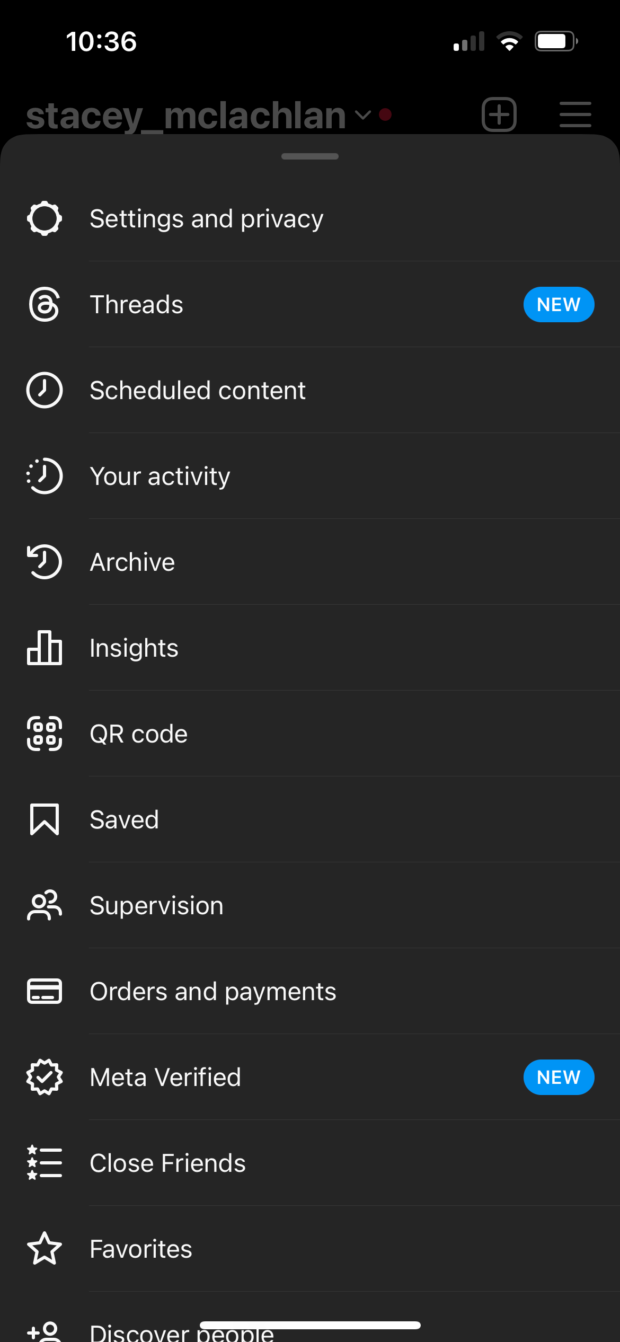Social selling — maybe you’ve heard of it, but you aren’t entirely sure what it means.
Think it’s the same as social media marketing? (Spoiler: It’s not.)
Or maybe you think it’s basically just social media advertising? (Second spoiler: Also no. That’s something else altogether.)
In short, social selling allows your business to zero in on business prospects on social media, build rapport with a network of potential leads, and generate social media sales. Done right, social selling can replace the dreaded practice of cold calling.
If you have not yet incorporated social selling into your funnel, you’re likely losing business to more social media savvy competitors. But once you’re done reading this guide, you will have all the information you need to change that.
In this post, we:
- Answer the question: What is social selling?
- Explain what a social selling index is.
- Share 4 reasons your business should care about social selling.
- Outline social selling tips and best practices.
- List 3 essential social selling tools.
Let’s get to it.
Bonus: Get the free social selling guide for financial services. Learn how to generate and nurture leads and win business using social media.
What is social selling?
Social selling is the practice of using a brand’s social media channels to connect with prospects, develop a connection with them and engage with potential leads. The tactic can help businesses reach their sales targets.
Think of social selling as modern relationship-building. Actively connecting with potential customers on social media can help you be the first brand a prospect considers when they’re ready to make a purchase. And it can replace outdated relationship-building and sales strategies like cold calling!
What social selling is not
Social selling is certainly not about bombarding strangers with unsolicited Tweets and DMs. That’s spam. Don’t do it.
Social selling is not just about adding new contacts to your list. It’s about making those interactions meaningful and presenting your brand as having a solution to a problem. When you do that, you’re more likely to build trust and loyalty.
For example, natural skin-care company SoKind is using basic social selling principles in this Facebook post. They clearly outline how their product solves a problem for moms. Highlighting the value of the products helps the brand naturally attract the right target audience and encourages sales:
Are you already engaged in social selling?
Probably! If your brand has a Facebook Business Page, a LinkedIn page or Twitter profile, or is active on any other platform, you’re already engaged in the basics of social selling.
If you’d like to learn more about social selling, take Hootsuite Academy’s Social Selling Certification Course:
What is the social selling index?
The social selling index (SSI) is a metric used to measure the impact of a brand’s social selling efforts.
LinkedIn first introduced the concept of the SSI back in 2014. The LinkedIn SSI combines four components to establish a score. It looks at whether you are:
- Establishing a professional brand with a well-managed LinkedIn profile.
- Finding the right people on the platform.
- Sharing relevant, conversation-inspiring content.
- Building and strengthening relationships.
To find your LinkedIn SSI score, sign in to your account and navigate to your Social Selling Index dashboard. Treat your score as a starting point to begin improving your social selling performance.
4 reasons your business should have a social selling strategy
If you’re still not sold (see what we did there?) on social selling, here are 4 reasons why you should give it a try.
1. Social selling works
Don’t just take our word for it. According to LinkedIn Sales Solutions’ internal data:
- Businesses that are leaders in the social selling space create 45% more sales opportunities than brands with a low social selling index.
- Businesses that prioritize social selling are 51% more likely to reach their sales quotas.
- 78% of businesses that use social selling outsell businesses that don’t use social media.
2. Social selling helps sales professionals build real relationships
A recent Forbes article states: “87% of business event professionals have canceled events because of the pandemic, and 66% postponed events.”
Networking and relationship-building have shifted online due to the COVID-19 pandemic — and now is the perfect time to prioritize social selling.
Social selling creates opportunities to build brand awareness and connect with new potential customers on social media, where they’re already active and engaging in conversations. Using social listening tools allows your sales reps to go a step further and identify leads who are already talking about your business, your competitors or your industry.
That means you can reach out to an audience who already have an interest in what you’re offering and authentically connect with them, offering useful information when the time is right. Authenticity builds trust — and that, in turn, can become customer loyalty.
3. Your customers (and prospects) are already engaged in social buying
In the last six months of 2020, 25% of Americans ages 18 to 34 made a purchase via social media. India, the UK, Australia and New Zealand all saw approximately a third of people ages 18 to 34 make a purchase via social media in that same timeframe.
Source: Statista
Considering the sheer volume of people currently using social media, the potential for brands to make social sales is huge:
- 4.2 billion people worldwide are active on social media.
- Social media platforms gained 490 million users in 2020 alone.
- That’s a 13.2% increase — 2019 saw a growth rate of 7.2%.
Source: The Global State of Digital 2021
Plus, a lot of those users are using social platforms for brand research. Simply speaking, these users are getting ready to buy.
Source: The Global State of Digital 2021
4. Your top competitors are already doing social media sales
Using social selling means staying competitive. Other brands are active on social media interacting with potential customers on popular social platforms. According to data from Statista: “In 2020, an estimated 25% of e-commerce enterprises worldwide were planning to sell their goods on social media.”
Now, consider the numbers:
- 200 million Instagram users visit a profile at least once a day and 81% of Instagram users are researching products and services on the platform.
- 18.3% of American Facebook users made a purchase via Facebook in 2020.
Source: eMarketer
- 70% of YouTube users have bought a brand’s product after seeing it on YouTube.
- 96% of B2B content marketers use LinkedIn for organic marketing. Facebook is the next most popular platform, used by 82% of B2B content marketers.
(There’s more where this came from! We’ve compiled a post with more than 140 social media statistics that matter to marketers in 2021.)
What are the best networks for social media sales?
In short, it depends.
Your choice should depend on your target audience and your approach to social selling.
Twitter and Instagram are great platforms for interacting with customers. They offer tools for responding to customer queries, and they’re casual virtual spaces where communication comes naturally. Simply speaking, they’re great for building relationships.
For example, Destination BC creates new connections with users and forges relationships by proactively commenting on users’ posts:
And Left On Friday replies to users’ and influencers’ comments to continue established relationships:
LinkedIn, on the other hand, is a more formal business platform ideal for B2B companies looking to identify and reach business decision-makers. Here, businesses can connect with potential customers directly to try and build a professional relationship:
In fact, according to LinkedIn:
- 89% of B2B marketers turn to LinkedIn to generate leads.
- 62% of B2B marketers say LinkedIn generates leads at twice the rate of the next-best performing social channel.
In other words, use whichever social platform your audience prefers — and whichever platform your brand will be able to use consistently!
Here’s how to get started on three popular platforms:
3 steps to building a social selling strategy on LinkedIn
1. Build your credibility
If you have a good relationship with your connections, ask them for endorsements or recommendations. These are posted on your profile and can help give you instant credibility with new contacts.
Here’s an example of numerous endorsements on researcher and storyteller Brené Brown’s profile:
As a brand, be sure your profile highlights expertise relevant to a potential customer or client by highlighting how you’ve helped previous customers achieve their goals.
You should also only share information and content from credible sources, and make sure to maintain a professional tone across all of your LinkedIn activity.
2. Extend your LinkedIn network
Use LinkedIn’s search feature to extend your network by seeking out mutual connections with your existing contacts.
You can also join LinkedIn Groups relevant to your industry to network with peers and prospects.
3. Use LinkedIn Sales Navigator
Sales Navigator, LinkedIn’s professional social selling tool, can help you improve sales prospecting with personalized communications and better understand your performance with in-depth analytics.
3 steps to social selling on Twitter
Twitter is a great network for social listening. You can create Twitter Lists to monitor content from specific groups of people. Here are three key Twitter lists you can use to start social selling on the network.
1. Existing customers
Use this list to keep close tabs on your existing customers and watch for opportunities to reply to — or like — their Tweets. This will help you keep your brand on their radar.
Don’t overdo it, though. Be sure that your interactions with clients are meaningful: only like Tweets that you genuinely like and only comment when you have something valuable to say. And make sure to stay relevant — your customers don’t need your brand interacting with personal updates.
2. Prospects
As you identify potential customers, add them to a private list. But don’t engage with them with the same sense of familiarity as you do with existing customers. Instead, keep an eye out for requests for help or grievances about your competitors. That way, you can reply with a helpful comment (and the exchange can serve as an organic piece of social proof for other prospects).
3. Competitors
Adding competitors to a private list lets you keep tabs on them without actually following them. This could help spark ideas for your own social selling efforts.
2 ways to start social selling on Facebook
Be sure to create a Facebook Page, then use these strategies to start social selling.
1. Engage with other businesses
It’s easy to reach out through likes comments, and shares. But take it one step further: if you create thoughtfu, valuable content, it’s likely to be shared, increasing your brand’s reach. Your Facebook Page could be exposed to a whole new audience as other businesses share and like your content.
2. Engage with followers
Always respond to your follower’s comments and mentions of your brand. Also, when putting together your own social media posts, include questions to spark conversations with your audience — they don’t need to be directly related to your product or service to be effective!
This tourism operator asks a question and follows it with trivia about sea lions, before connecting the post to its business:
This strategy allows you to interact directly with followers, builds rapport and helps you build your image as an expert.
Social selling best practices
Whichever platform you use to reach your unique audience, make sure you’re following tried social selling tips. Here are 4 to keep in mind.
1. Establish your brand by providing value
When interacting with prospects and customers through social networks, it’s important not to get too salesy. And if your brand is new to a social media platform, don’t dive into social selling right away. Before you jump to sales pitches, establish your position as an expert in your industry.
One way to build your brand on social media for social selling is by sharing interesting, valuable and shareable content. For B2B brands and business influencers using LinkedIn, this could mean sharing content written by others that aligns with your brand:
Or it might mean writing and sharing interesting content that others will find useful to establish your brand (or personal brand) as an industry thought leader. For example, Destination BC shares business-specific content that their professional network may find interesting:
Basically, show your prospects that you’re not just out to get something. You’re there to give something, too.
2. Listen strategically and build relationships with the right people
Effective social selling means paying attention. In other words, make sure you’re social listening.
Use social lists and Hootsuite streams to monitor what people are saying about you, your company, your industry and your competitors. Watch for pain points and requests, both of which provide natural opportunities for you to provide solutions.
You should also leverage your existing network whenever possible. Before reaching out to any of the leads you identify, check their following and follower lists to see if you have any mutual connections. If you do, ask your shared contact for an introduction.
3. Keep it real
Instead of writing one note and sending it to countless potential buyers, take the time to personalize your social selling messaging. This means you could:
- Acknowledge your mutual professional contacts.
- Refer to a piece of content you both shared or reacted to.
- Highlight a shared interest or something else you have in common.
In other words, be yourself. Form a connection by starting a real, genuine conversation!
Sure, you could use automated liking and commenting tools, but these do nothing to build rapport. In fact, they can do serious damage to your personal and professional brand. When it comes to selling, nothing beats interacting with an actual human.
4. Be consistent
Finally, don’t expect immediate results. If your relationship building efforts don’t yield immediate results, don’t give up. Some contacts may not be ready to purchase whatever you’re offering quite yet — keep in touch.
Follow-up with new leads. Reach out to contacts you’ve previously connected with, but haven’t heard from in a while. Maintain meaningful relationships by offering congratulations when they move to new positions or companies or engaging with the content they share over social media. Be ready to offer advice or help, even if it doesn’t directly promote your product.
3 useful social selling tools
To increase your odds of landing new clients on social media, leverage social selling software. Here are 3 to help you get started:
1. Hootsuite Inbox
Regardless of whether your brand’s social selling techniques involve private messages, public messages (like comments), or both, Hootsuite Inbox will keep all of them organized.
Think of this social selling tool as a convenient way to keep all of your brand’s social media conversations in one place. Using the Hootsuite Inbox, you can monitor, organize and respond to any private and public messages your brand receives across many social platforms.
Keeping your social media communications organized is a way to ensure no messages fall through the cracks and that everyone who connects with you gets a response.
Other useful features include:
- Handy filters you can apply to quickly and easily find the communication thread you’re looking for, even if you’re handling high volumes of messages and comments.
- Teamwork and collaboration solutions that allow you to assign messages to team members as tasks so that each query receives a response from the best possible person at your company.
- Saved replies that you can re-use to quickly reply to common queries.
Here’s more info on how to make the most of Hootsuite Inbox:
2. Amplify
This app integrates with Hootsuite and is an effective way for your brand to extend its social reach. In a nutshell, Amplify helps your brand increase its online visibility by making it easy for team members to share company updates, campaigns or announcements.
An employee advocacy app like Amplify can help employees feel engaged and compelled to share company content — which is a great, organic way for your brand to reach new potential customers. That’s because tapping into your employees’ personal networks extends the reach of your content.
Source: Hootsuite
3. Salesforce
This app also integrates with Hootsuite and is an easy way to search, edit and monitor new business leads.
With Salesforce, you can fetch new customer or prospect records into the app directly from Hootsuite streams. Plus, Salesforce streamlines reaching out to potential leads and qualifying them. You can also add more details to existing Salesforce records to inform future conversations around social selling.
Here’s more info on how to get the most out of Salesforce with Hootsuite:
Sales has always been about building relationships, establishing credibility and providing the right solutions to the right prospects at the right time. Social selling is like that too. It simply leverages social media to help you build relationships, expand your network, streamline lead generation and meet your sales goals!
Do it better with Hootsuite, the all-in-one social media tool. Stay on top of things, grow, and beat the competition.
The post Social Selling Explained: A 2023 Guide to Social Media Sales appeared first on Social Media Marketing & Management Dashboard.














Recent Comments